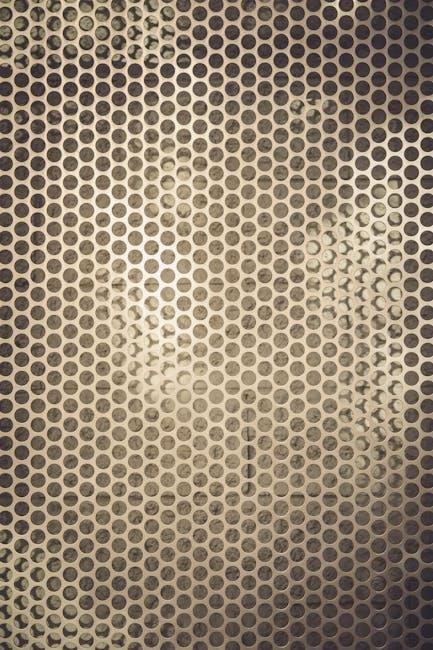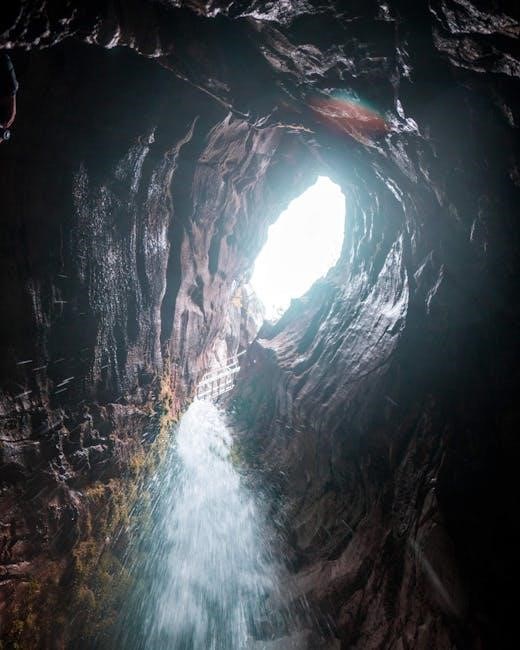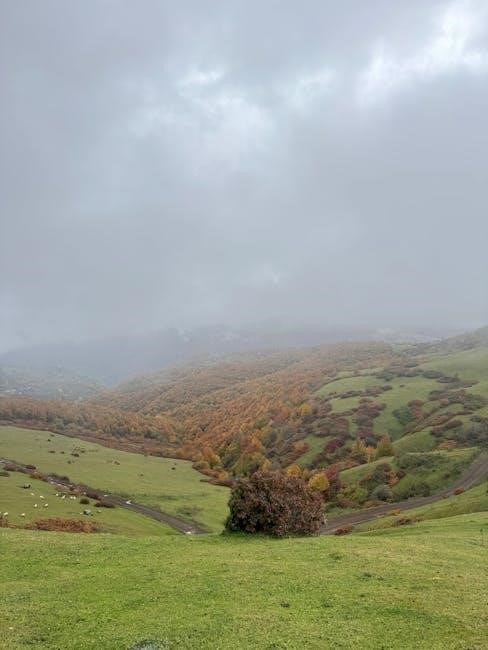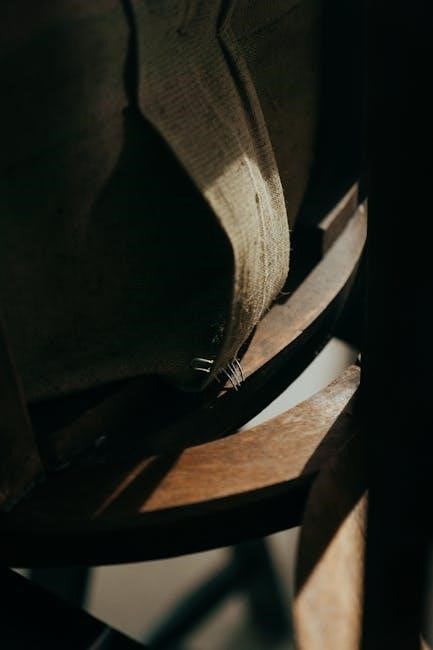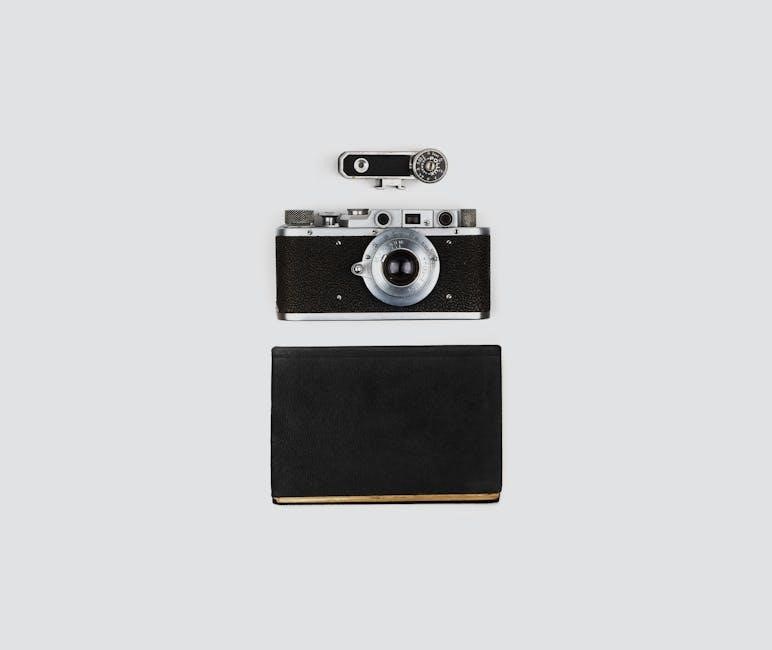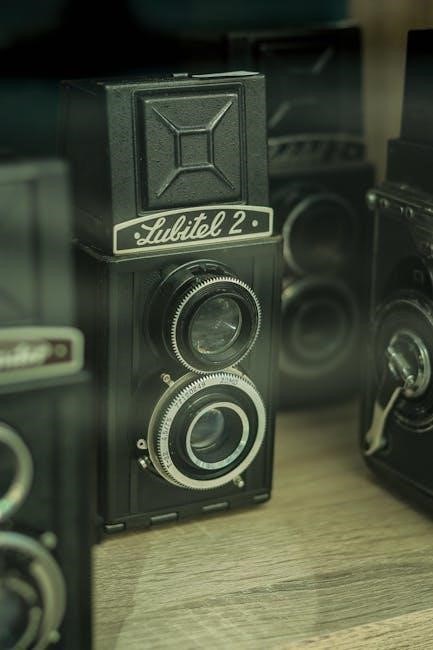Tasco Game Camera Instructions: A Comprehensive Guide
This guide offers detailed instructions for Tasco trail cameras, covering setup, operation, and troubleshooting for models like 119270CW and 119215C․
Tasco trail cameras represent an accessible entry point into wildlife observation and security monitoring․ These cameras, including popular models like the 119270CW/119271CW, are designed for ease of use and affordability․ They cater to hunters tracking game, nature enthusiasts, or individuals seeking basic surveillance․
As a budget-friendly option, Tasco cameras provide essential features like photo and video capture, motion detection, and time-lapse functionality․ Understanding their capabilities and limitations is key to maximizing their effectiveness in various outdoor environments․ This guide will navigate you through the specifics․
Understanding Tasco Camera Models
Tasco offers a range of trail camera models, each with slightly varying features and specifications․ Popular choices include the 119270CW and 119271CW, known for their simplicity and reliable performance․ Other common models, such as the 119274CW, 119215C, and 119203C, provide diverse options to suit different needs․
Key distinctions between models often lie in image resolution, trigger speed, and detection range․ Reviewing the specific manual for your model (available online via the Internet Archive and YouTube tutorials) is crucial for optimal setup and operation․
Popular Models: 119270CW/119271CW
The Tasco 119270CW and 119271CW are budget-friendly trail camera options ideal for basic wildlife monitoring or security purposes․ These models are frequently discussed in online communities like Reddit’s r/instructionmanuals, with readily available YouTube guides detailing their use․
They typically capture high-quality photos and offer essential features like adjustable sensitivity and time/date settings․ Understanding the manual is key to maximizing their potential, ensuring clear images and efficient operation in various outdoor environments․
Other Common Models: 119274CW, 119215C, 119203C
Tasco offers several other popular trail camera models, including the 119274CW, 119215C, and 119203C, each with slightly varying features and capabilities․ The 119274cw manual provides detailed setup and troubleshooting guidance, while the 119215C’s user manual is accessible through the Internet Archive․
The 119203C model, often found at Walmart, benefits from readily available online documentation․ Understanding the specific instructions for your model ensures optimal performance and image quality․
Initial Setup and Preparation
Before deploying your Tasco trail camera, proper initial setup is crucial for reliable operation․ This involves two key steps: installing batteries and inserting an SD card․ Ensure you use fresh batteries, as low power can cause malfunctions․
The SD card is essential for storing captured photos and videos; consult your camera’s manual for compatible card types and maximum capacity․ Proper installation of both components guarantees the camera functions as intended․
Installing Batteries
To install batteries in your Tasco trail camera, locate the battery compartment, typically secured with a latch․ Open the compartment and insert the required number of batteries, paying close attention to the polarity markings (+ and -) inside․
Using fresh, high-quality batteries is highly recommended for optimal performance and longevity․ Ensure the batteries are correctly seated and the compartment is securely closed to prevent power issues or weather damage․
Inserting the SD Card
Locate the SD card slot on your Tasco trail camera; it’s usually near the battery compartment․ Gently insert a compatible SD card into the slot, ensuring it clicks into place․
The camera supports specific SD card capacities – check your model’s manual for details․ Formatting the SD card within the camera before first use is recommended for optimal performance․ Avoid removing the card while the camera is powered on to prevent data corruption․

Camera Modes and Settings
Tasco trail cameras offer versatile modes for diverse monitoring needs․ Explore Photo Mode for still images, adjusting resolution for clarity and file size․
Video Mode captures moving wildlife, with options to customize recording length․ Hybrid Mode combines both photo and video capture, maximizing data collection․ Navigate these settings via the camera’s menu, tailoring the camera to your specific surveillance requirements for optimal results․
Photo Mode: Resolution and Quality
In Photo Mode, Tasco cameras allow adjustment of image resolution, impacting both clarity and storage space․ Higher resolutions (e․g․, 8MP) deliver detailed images, ideal for identifying animals or features․
Lower resolutions conserve SD card space, suitable for general monitoring․ Quality settings further refine image sharpness and compression․ Experiment with these options to balance image detail with storage efficiency, optimizing performance for your specific needs․
Video Mode: Resolution and Length
Tasco trail cameras offer Video Mode with adjustable resolution and recording length․ Resolutions typically range from lower settings for extended recording times to higher settings for detailed footage․
Video length options allow you to choose between short clips (e․g․, 10 seconds) to capture quick movements or longer recordings (e․g․, 60 seconds or more) for comprehensive event documentation․ Balancing resolution and length is key to efficient storage use․

Hybrid Mode: Combining Photo and Video
Tasco trail cameras often feature a Hybrid Mode, intelligently combining photo and video capture․ This mode typically triggers a photo before initiating a video recording when motion is detected․
This ensures you have both a still image and a video clip of each event․ Hybrid Mode is ideal for comprehensive monitoring, providing detailed visual information․ Adjust settings to prioritize either photo or video quality within this mode for optimal results․
Configuring Detection Settings

Optimizing detection settings is crucial for effective wildlife monitoring․ Tasco cameras allow adjustments to sensitivity, detection range, and trigger speed․ Sensitivity controls how much movement triggers a capture; higher sensitivity detects smaller motions․ Detection range defines the camera’s field of view․
Trigger speed, the time between motion detection and image capture, impacts clarity․ Fine-tuning these settings minimizes false triggers and ensures you capture desired activity․
Sensitivity Level Adjustment

Adjusting sensitivity determines the level of motion needed to activate the camera․ Lower settings reduce false triggers from wind or small animals, ideal for areas with consistent movement․ Higher sensitivity captures even subtle motions, useful for elusive wildlife․
Tasco cameras typically offer Low, Medium, and High sensitivity options․ Experimentation is key; start with Medium and adjust based on captured images and unwanted triggers․
Detection Range Optimization
Optimizing detection range ensures the camera captures activity at the desired distance․ Factors like lens angle and surrounding vegetation impact range․ Wider angles increase coverage but can reduce clarity at distance․ Clearing brush in front of the camera maximizes effective range․
Tasco cameras often feature adjustable detection ranges․ Test different settings to find the sweet spot for your location, balancing coverage with accurate triggering․
Trigger Speed Explained
Trigger speed refers to how quickly the camera captures an image or video after detecting motion․ Faster trigger speeds are crucial for capturing moving animals without missing the action․ Tasco cameras vary in trigger speed; some models prioritize speed while others focus on image quality․
A faster trigger speed minimizes the chance of only capturing a departing animal’s tail! Adjusting sensitivity settings can influence trigger speed, balancing responsiveness with false triggers․
Time and Date Settings
Accurate time and date stamping is essential for organizing and analyzing your trail camera footage․ Most Tasco cameras require manual setting of the current time and date through the camera’s menu system․ Access these settings using the control buttons, navigating to the time/date options․
Ensure the correct format (MM/DD/YYYY or DD/MM/YYYY) is selected․ Proper time and date settings are vital for understanding animal activity patterns and events captured by your camera․
Setting the Current Time
To set the current time on your Tasco trail camera, first enter the camera’s menu using the designated buttons․ Navigate to the “Time Set” option, typically found within the system settings․ Use the up and down arrows to adjust the hour, and then confirm your selection․
Repeat this process for setting the minutes․ Ensure you’re aware of whether the camera displays time in 12-hour or 24-hour format․ Accurate time setting is crucial for data organization․
Setting the Correct Date
After setting the time, accurately configuring the date is essential for proper image and video timestamping on your Tasco trail camera․ Access the “Date Set” option within the camera’s menu system, usually alongside the time settings․
Utilize the arrow buttons to adjust the month, day, and year sequentially, confirming each selection․ Double-check the date format (MM/DD/YYYY or DD/MM/YYYY) to avoid errors․ Correct date and time ensure organized and useful data logs․
Image and Video Review
Tasco trail cameras allow for convenient on-camera review of captured images and videos․ Utilize the camera’s built-in screen to scroll through photos and playback video clips․ Navigation buttons control image selection and playback functions․
For archiving and detailed analysis, remove the SD card and insert it into a computer with an SD card reader․ This enables easy file transfer and organization․ Regularly reviewing footage helps optimize camera settings and monitor wildlife activity․
Viewing Images on the Camera Screen
The Tasco trail camera’s LCD screen provides a convenient way to review captured images directly in the field․ Use the ‘Menu’ or ‘Play’ button to access the image review mode․ Utilize the up and down buttons to scroll through individual photos․
Press the ‘Play’ button again to view video clips․ The screen displays file information like date and time․ Remember to conserve battery life by limiting prolonged screen usage during field checks․
Transferring Files to a Computer
To access your photos and videos on a computer, remove the SD card from your Tasco trail camera․ Insert the SD card into an SD card reader connected to your computer․
Your computer will recognize the card as a removable drive․ Open the drive to copy the desired files to your computer’s hard drive․ Ensure safe removal of the SD card from your computer to prevent data corruption․
Advanced Features
Tasco trail cameras offer features beyond basic photo and video capture․ Time-lapse photography allows capturing images at preset intervals, condensing long periods into shorter sequences․
Interval recording functions similarly, but for video․ Password protection secures your camera from unauthorized access, safeguarding your captured content․ These advanced capabilities enhance monitoring and provide greater control over your trail camera experience․
Time-Lapse Photography
Tasco’s time-lapse feature captures images at user-defined intervals, ideal for observing changes over extended periods․ This function compresses hours or even days into a concise visual sequence, perfect for monitoring plant growth, animal activity patterns, or weather changes․
Configure the interval – from seconds to hours – to suit your observation needs․ Review the resulting images to create a compelling visual record of events unfolding in the field․
Interval Recording
Tasco trail cameras offer interval recording, a feature distinct from time-lapse, focusing on continuous video capture with defined gaps․ This mode records video clips for a set duration, then pauses for a specified interval before resuming, conserving SD card space․
Adjust the recording length and interval to balance continuous monitoring with efficient storage․ This is useful for observing activity without capturing every single moment, extending recording time․
Password Protection
Certain Tasco trail camera models incorporate password protection to prevent unauthorized access to images and settings․ This security feature safeguards your captured footage and configurations from tampering or accidental changes․
Enable password protection through the camera’s menu, creating a unique PIN code․ Remember this code, as it’s essential for accessing the camera’s functions and reviewing media․ Without the password, settings and files remain inaccessible, ensuring privacy and security․
Mounting and Placement
Strategic mounting and placement are crucial for optimal wildlife capture with your Tasco trail camera․ Select locations with clear views of game trails, feeding areas, or water sources, avoiding direct sunlight and dense foliage;
Securely attach the camera to a tree or post using the provided mounting strap, ensuring stability and minimizing movement․ Consider camera height – approximately 3-5 feet is often ideal․ Regularly check the mounting to prevent shifting due to weather or animal interference․
Optimal Camera Placement for Wildlife

To maximize wildlife detection, focus on areas exhibiting animal activity․ Look for established game trails, frequently visited feeding locations, and nearby water sources․ Avoid positioning the camera directly facing the sun, which can cause glare and wash out images․
Consider prevailing wind directions; animals often approach from downwind․ Clear any obstructing vegetation, but maintain some natural cover for concealment․ A height of 3-5 feet generally provides a good field of view․
Securing the Camera to a Tree or Post
Utilize the mounting strap provided with your Tasco camera for secure attachment․ Wrap the strap firmly around a tree or post, ensuring the camera is stable and doesn’t sway in the wind․ Avoid using nails or screws that could harm the tree․
Position the camera to minimize movement from animals or weather․ Regularly check the strap’s tightness, especially after strong winds․ Consider a security box or cable lock for added protection against theft or vandalism․
Troubleshooting Common Issues
If your Tasco camera won’t power on, verify battery installation and ensure they are fresh․ For poor image quality, check lens cleanliness and adjust resolution settings․ Short battery life can be improved by reducing trigger frequency or using higher-capacity batteries․
If issues persist, consult the manual or online resources․ Ensure the SD card is compatible and properly inserted․ Consider firmware updates if available, as these often address known bugs․
Camera Not Powering On
If your Tasco trail camera fails to power on, the first step is to confirm correct battery installation, paying close attention to polarity (+/-)․ Ensure the batteries are fresh and have sufficient charge; even new batteries can be defective․
Try a different set of batteries to rule out a battery issue․ Inspect the battery compartment for any corrosion or debris that might be hindering contact․ A faulty power switch is also a possibility․
Poor Image Quality
If images from your Tasco trail camera appear blurry or unclear, several factors could be at play․ First, verify the lens is clean and free of obstructions like dust, dirt, or spiderwebs․ Adjust the camera’s resolution settings to a higher quality for sharper images․
Ensure sufficient ambient light; low light conditions can impact image clarity․ Check the camera’s focus – some models offer adjustable focus settings․ Finally, confirm the SD card isn’t full or corrupted․
Short Battery Life
Reduced battery life in your Tasco trail camera is a common concern․ Using higher resolution settings (photo and video) consumes more power․ Frequent triggering due to high sensitivity or animal activity significantly drains batteries․
Ensure you’re using fresh, high-quality batteries – alkaline are generally recommended․ Consider using a larger battery capacity if supported by your model․ Lowering the camera’s sensitivity and trigger interval can also extend battery life․

Understanding the LED Indicator
The LED indicator on your Tasco trail camera provides crucial operational status information․ During operation, a flashing LED typically signifies the camera is in detection mode or actively capturing images/video․
Different LED patterns indicate battery levels – a rapidly flashing or solid red LED often signals low battery․ Some models use a green LED to confirm normal operation․ Refer to your specific model’s manual for detailed LED code interpretations․
LED Status During Operation
While actively monitoring, the Tasco camera’s LED indicator provides real-time feedback․ A brief flash confirms motion detection, signaling the camera is preparing to capture an image or video․
A consistent, slow blink usually means the camera is in standby mode, conserving battery power․ If the LED remains illuminated for an extended period during detection, it may indicate a recording is in progress․ Understanding these patterns helps confirm proper functionality․
LED Indicators for Battery Level
The Tasco trail camera utilizes the LED to signal remaining battery life․ A solid green light generally indicates a full or healthy battery charge, ensuring optimal performance․
A flashing yellow light suggests a medium battery level, prompting a check soon․ A solid red light signifies a critically low battery, requiring immediate replacement or recharge to avoid interrupted surveillance․ Pay attention to these cues for uninterrupted operation․
Remote Control Operation (If Applicable)
If your Tasco camera model includes a remote control, pairing is typically straightforward․ Ensure the camera is powered on, then follow the manual’s instructions to initiate the pairing process, often involving pressing a button on both devices․

Remote functions usually include camera activation for instant image capture, settings adjustments, and reviewing stored photos or videos without disturbing the camera’s location․ Always refer to your specific model’s manual for detailed instructions․
Pairing the Remote Control
To pair the remote, first, ensure fresh batteries are installed in both the camera and the remote control unit․ Power on the Tasco trail camera․ Consult your camera’s manual for the specific pairing button – it’s often labeled “Pair” or “Remote․”
Press and hold this button until the camera indicates pairing mode, usually with a flashing LED․ Then, press a button on the remote․ Successful pairing is confirmed by a solid LED or a beep․
Using Remote Functions
Once paired, the remote control offers convenient, hands-free operation of your Tasco trail camera․ Typically, buttons allow you to instantly take a photo, start or stop video recording, and review captured images or videos directly on the camera’s screen․
Some remotes also feature a ‘setup’ button for quick access to menu settings․ Range varies, but generally operates within 30-50 feet․ Always point the remote towards the camera for optimal signal transmission․
Firmware Updates (If Available)
Check the Tasco website periodically for available firmware updates for your specific camera model․ These updates can improve performance, fix bugs, and add new features․ Download the update file to an SD card, then follow the on-screen instructions within the camera’s menu to initiate the update process․
Ensure the camera has sufficient battery power during the update to prevent interruption․ A failed update could render the camera unusable, so proceed with caution and follow all instructions carefully․
Checking for Firmware Updates
To check for firmware updates, visit the official Tasco website and navigate to the support section for trail cameras․ Locate your specific model number (e․g․, 119270CW) and see if a newer firmware version is listed․
The website will provide instructions and the necessary files for downloading․ Regularly checking for updates ensures your camera operates with the latest improvements and bug fixes, maximizing its functionality and reliability in the field․
Updating the Camera Firmware
After downloading the latest firmware, carefully follow the instructions provided on the Tasco website․ Typically, this involves formatting an SD card and transferring the firmware file onto it․
Insert the SD card into your Tasco trail camera and power it on, initiating the update process․ Do not interrupt the update! A successful update will enhance performance and potentially add new features to your camera, ensuring optimal operation․

Safety Precautions and Maintenance
Protect your Tasco trail camera from harsh weather conditions like extreme temperatures and direct sunlight․ Regularly inspect the camera housing for any damage or leaks․
For cleaning, use a soft, damp cloth to wipe the exterior․ Avoid abrasive cleaners․ Store the camera in a dry, secure location when not in use, and always remove the batteries for extended storage to prevent corrosion and ensure longevity․
Protecting the Camera from the Elements
Tasco trail cameras are designed for outdoor use, but protection from the elements is crucial for longevity․ Shield the camera from direct sunlight, heavy rain, and snow whenever possible․
Consider using a waterproof camera case or mounting it under a protective overhang․ Ensure the battery compartment is sealed tightly to prevent moisture damage․ Regularly check for condensation inside the camera housing and dry it thoroughly if found, extending its operational life․
Cleaning and Storage
Proper cleaning and storage are essential for maintaining your Tasco trail camera’s performance․ Use a soft, dry cloth to gently wipe the camera housing, avoiding abrasive cleaners that could damage the lens or finish․
Before long-term storage, remove the batteries to prevent corrosion․ Store the camera in a cool, dry place, away from direct sunlight and extreme temperatures․ A protective case is recommended to prevent dust accumulation and physical damage during storage periods․

Resources and Support
For additional assistance with your Tasco trail camera, several online resources are available․ Reddit’s r/instructionmanuals often hosts shared manuals and troubleshooting advice․ YouTube features instructional videos, like one specifically for models 119270CW/119271CW․
The Internet Archive provides access to user manuals, including the 119215C model․ Searching online for your specific model number will yield further documentation and support forums․ Remember to check for firmware updates when available!













